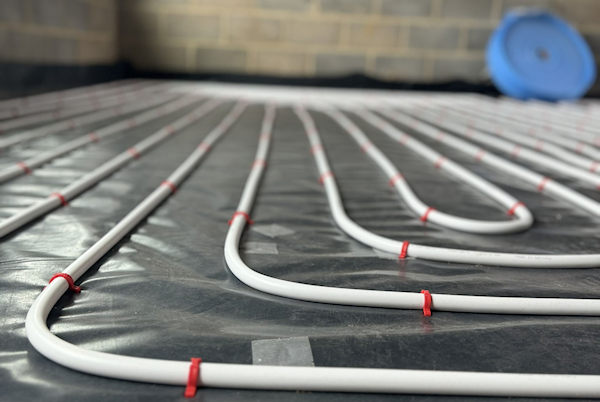
How Multipipe are adapting to Part L regulation changes
In December 2021, the UK Government announced the first major changes to the Building Regulations in nearly a decade by releasing the latest approved documents affecting parts L, F & O. The Future Homes Standard (FHS) is due to be implemented in 2025. The new building regulations form part of the Government policy to achieve the FHS.
This link takes you to the Government document on Part L
The FHS dictates that new homes must produce at least a 75% reduction in CO2 emissions. Therefore, in relation to the 2013 version of the document, the recently released Part L version aims for an average decrease of 27% to 30% in CO2 emissions, providing a springboard to the upcoming requirements of the Future Homes Standard.
As a result, all new heating systems will have to be designed with a maximum flow temperature of 55°C or lower from June this year.
The regulations provide flexibility in meeting the targets, and various renewable energy sources are already on the market, providing installers with options to suit different types of buildings. However, the Government expects heat pumps to become the primary heating technology for new homes. In addition, there is also a requirement for automated and zoned control devices.
Multipipe – Changing our working practices to suit Part L regulations
Due to the changes to the Part L regulations to reduce water flow temperatures on heat sources, we have taken the opportunity to update how we operate. For years we have always provided thermostatic mixing controllers on the split heating systems, i.e. radiators and UFH.
However, from now on, we will ask our customers about their project’s running temperature and advise them accordingly, no matter what the heat source is.
Why? Because all thermostatic mixers have a reduction in a bore through the valve body, meaning they need a certain delta (around 10°C) between the primary flow temperature and secondary temperature required.
Therefore, if we plan to run a system at 40°C we would not want to mix this and allow full bore to the manifold. Remember, the restriction will not only affect overall system performance but can cause issues with cycling on heat pumps and lockouts on boilers. For system efficiency, reducing the temperature results in massive savings in running costs. Temperature reductions apply not only to heat pumps but also to boilers, meaning that closing pipe centres and increasing radiator sizes are good options where possible.
How Multipipe Can Help
We now see heating systems with flow temperature requirements of only 25-30°C due to three main reasons;
- Homes are getting more efficient
- Lower heat losses due to improved strategy
- Tighter pipe centres and smarter design
On a pure UFH system, with the high thermal mass and continual operation at a set temperature, these changes result in the highest level of SPF (Seasonal Performance Factor) for heat pumps or higher ERP ratings for boilers.
From industry feedback, we see the most common issues not being heat pumps but coming from;
- Poor system design
- Lack of end-user education in running the system
- (in some cases) poor installation.
The primary cause for these issues is a lack of education, and this is why here at Multipipe, we are always willing to help on all aspects of our UFH systems. We have the know-how to ensure the best system for your project, from design to installation to end-user guides. Follow the link to see our UFH systems
Please be patient whilst discussing your next project – there is a reason we’re asking questions. It’s because we want you and your customer to have the best, most efficient system possible.
Call us on 01245 227 630 or email quotes@multipipe.co.uk to discuss your next project and how we can help.











